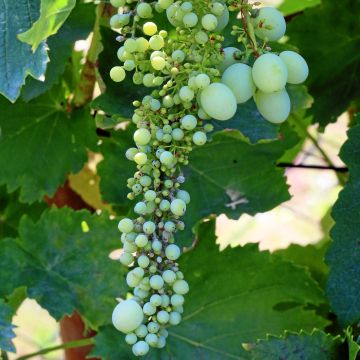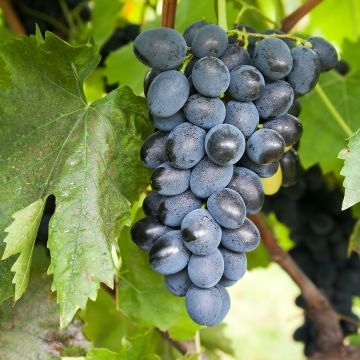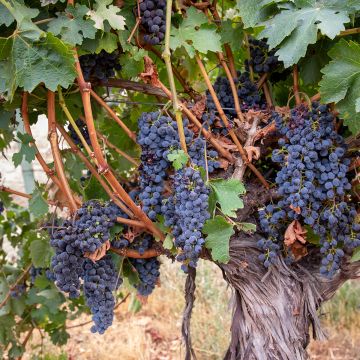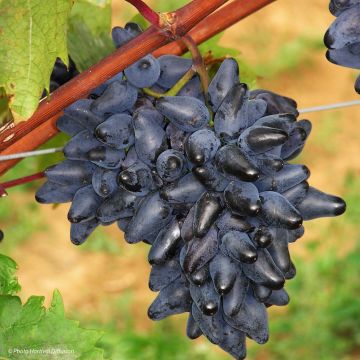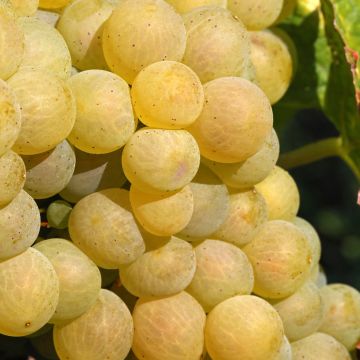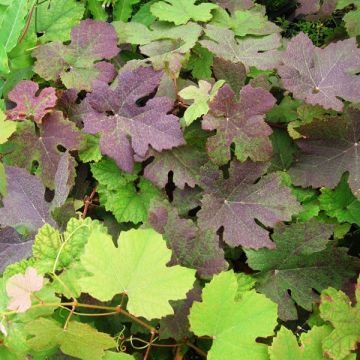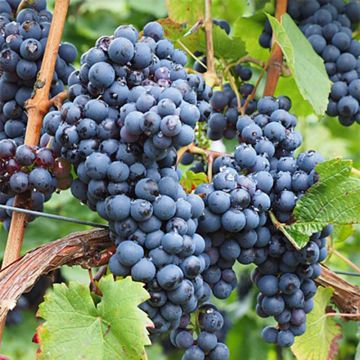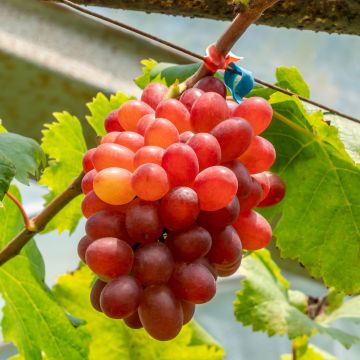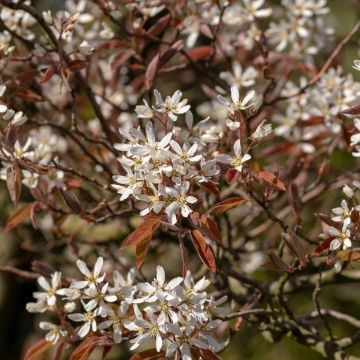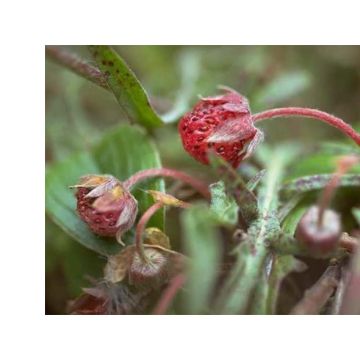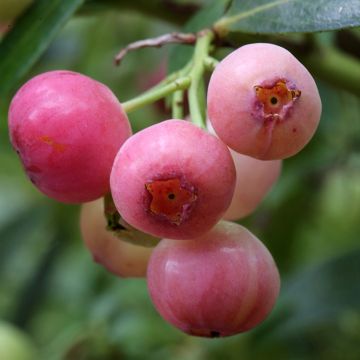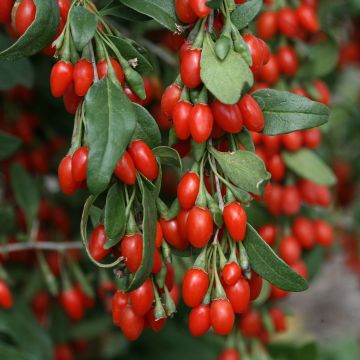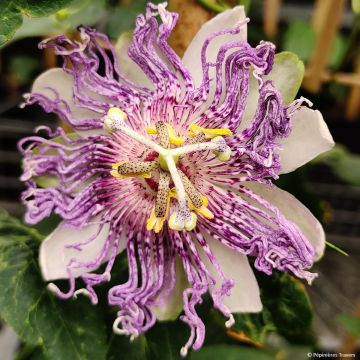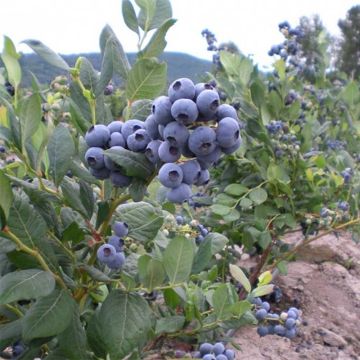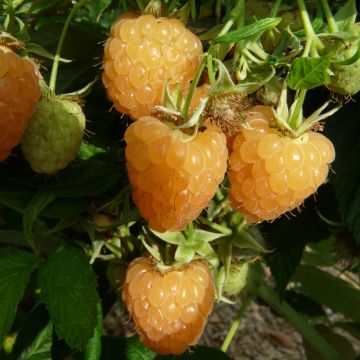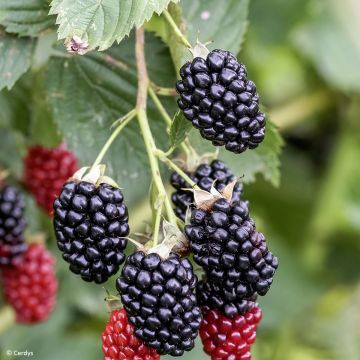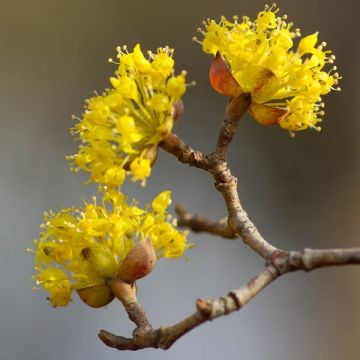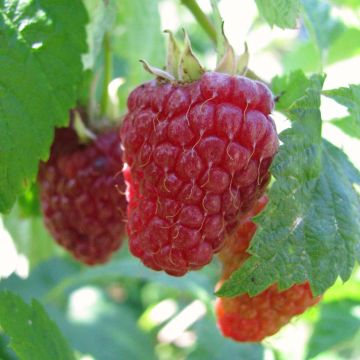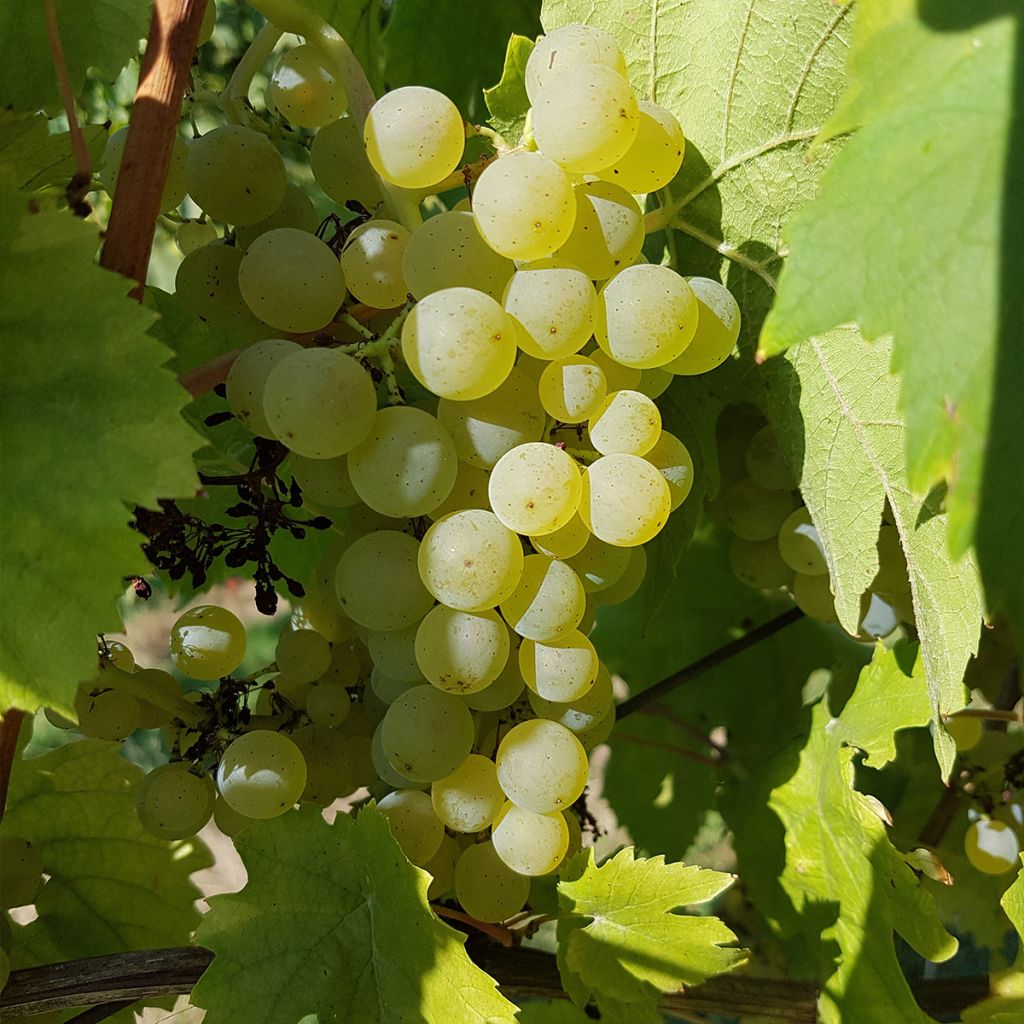

Vitis vinifera Chasselat Cioutat - Grape vine
Vitis vinifera Chasselat Cioutat - Grape vine
Vitis vinifera Chasselas Cioutat
Common Grape Vine, European Grape, Wine Grape
This item cannot be shipped to the selected country
Delivery charge from €5.90
Delivery to Corse prohibited
More information
Schedule delivery date,
and select date in basket
This plant carries a 6 months recovery warranty
More information
We guarantee the quality of our plants for a full growing cycle, and will replace at our expense any plant that fails to recover under normal climatic and planting conditions.
From €5.90 for pickup delivery and €6.90 for home delivery
Express home delivery from €8.90.
Delivery to Corse prohibited: UE law prohibits the import of this plant from mainland France to Corse as part of the fight against Xylella fastidiosa. Please accept our sincere apologies.
More information
Description
The 'Chasselas Cioutat' is a very unique variety, both in terms of taste and decoration. This climbing plant produces highly perfumed and sweet golden yellow grapes, just like the classic 'Chasselas' from which it originates and which has a well-established reputation. In addition to its delicious berries, this grape variety displays a magnificent, deeply cut foliage, which also takes on beautiful yellow to red colours in autumn. This vine thrives in most neutral to limestone, well-drained soils in sunny locations. It is resistant to cold temperatures.
The wine grape vine (Vitis vinifera) grew wild over 5000 years ago in North and Central America, Europe, and Central and Eastern Asia. The subspecies sylvestris still exists, and it is a climbing liana that grows on the edges of forests and can reach great heights in trees. It was introduced to France for cultivation by the Phocaeans in Provence around 600 BC. The current varieties, referred to as grape varieties, are classified under the subspecies vinifera (although there are other cultivated species, but they are very rare). Economically, wine grapes dominate over table grapes, with more than 200 authorized grape varieties in France, the result of centuries of selective breeding.
A sarmentous climbing shrub of medium vigour, the 'Chasselas Cioutat' vine can easily reach a height or spread of 4m (13ft) if not pruned. Its final shape will depend on the pruning method used. Despite being a vine with tendrils, it still needs support to help it climb: trellises, fences, arbors, pergolas, etc. It is also a frugal sun-loving plant that prefers a soil that is both clayey and rocky, with a tendency towards limestone, but it can be sensitive to prolonged drought. Its flowering occurs in May-June, depending on the year and region, producing small greenish flowers in large conical and cylindrical clusters. The grapes turn yellow to golden at maturity in September. This variety is a mutation of the well-known and renowned 'Chasselas' grape, retaining all its delicious qualities. The berries are both fragrant and sweet.
The mutation that distinguishes it from the original variety is mainly in its foliage, which is deeply and intricately cut. Recognizable among a thousand, it stands out from other grape varieties and can rival the most beautiful ornamental foliage. To top it off, it takes on beautiful colours in autumn, ranging from yellow to red, further enhancing its aesthetic appeal.
Being highly hardy (down to -20°C, or even -25°C), this vine thrives in full sun, in neutral to slightly acidic, well-drained soil. It can tolerate ordinary, even rocky soil, as long as it is not too dry. Excessive soil fertility or over-fertilization will benefit vegetative growth more than fruit production (in this particular case, it could almost be an objective given the beauty of the foliage, but it is completely unnecessary!). Simply apply organic fertilizer after harvest to build up reserves for the winter. Your vine will use them to start fresh in the following spring.
The 'Chasselas Cioutat' grapes can be enjoyed fresh or used to make juice, for example in a vitamin-packed fruit cocktail for breakfast. With its magnificent foliage, you can use it to decorate an arbor, pergola, or train it against a sunny wall sheltered from cold winds. Create a surprise by combining it with ornamental climbers like Clematis to add the beauty of their flowers to the unique foliage. You can also vary the taste by planting a black grape variety alongside it, such as the delicious 'Muscat de Hambourg' with its very sweet fruits.
Report an error about the product description
Vitis vinifera Chasselat Cioutat - Grape vine in pictures
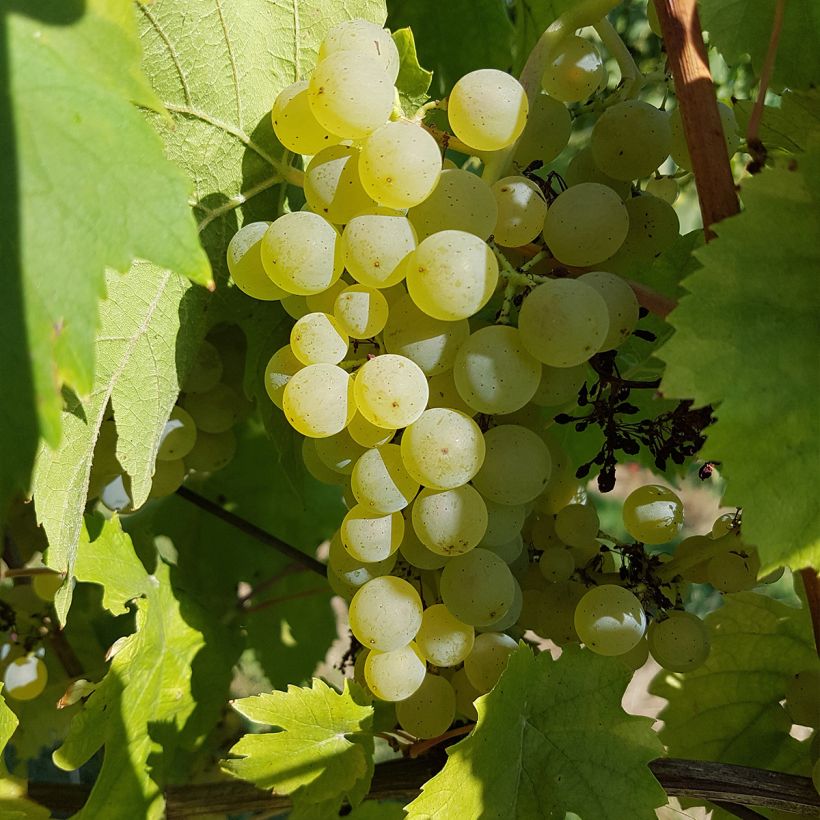

Plant habit
Fruit
Flowering
Foliage
Botanical data
Vitis
vinifera
Chasselas Cioutat
Vitaceae
Common Grape Vine, European Grape, Wine Grape
Cultivar or hybrid
Other Grapevines
Planting and care
Since the ravages of phylloxera at the end of the 19th century, the vine is obligatorily grafted onto different resistant rootstocks and adapted to different types of soil. These rootstocks come from American varieties naturally armed against this formidable parasite itself of American origin.
Plant the 'Chasselas Cioutat' vine in autumn, in a deep, well-drained soil, even stony, clayey and limestone, knowing that the vine is not demanding in terms of the chemical nature of the soil. It is capable of adjusting to moderately acidic soil (up to pH 6 approximately, because below this, there are assimilation blockages of certain trace elements), neutral and limestone up to pH 8.5 approximately (knowing that in this case, it is actually the excess of active limestone that is detrimental).
Install it in a well-sunny location, sheltered from strong, cold and dry winds. This variety withstands winter frosts, it is hardy down to -20°/-25 °C. Incorporate into the planting soil 3 or 4 handfuls of fertilizer for fruit trees and 2 kg of composted manure for each vine-plant. Attention, the roots should not be in contact with the manure. After planting, prune above 2 large buds (buds) to obtain the growth of two shoots. Keep the most vigorous one and tie it to a stake. This will be followed by training pruning.
The vine does not require regular fertilizer application, quite the contrary for good yield. In overly rich soil, vegetation (leaves) will develop at the expense of fruiting. Enrich the soil with potash slag, crushed horn or iron chelate, only every 2-3 years.
Planting period
Intended location
Care
This item has not been reviewed yet - be the first to leave a review about it.
Berries
Haven't found what you were looking for?
Hardiness is the lowest winter temperature a plant can endure without suffering serious damage or even dying. However, hardiness is affected by location (a sheltered area, such as a patio), protection (winter cover) and soil type (hardiness is improved by well-drained soil).

Photo Sharing Terms & Conditions
In order to encourage gardeners to interact and share their experiences, Promesse de fleurs offers various media enabling content to be uploaded onto its Site - in particular via the ‘Photo sharing’ module.
The User agrees to refrain from:
- Posting any content that is illegal, prejudicial, insulting, racist, inciteful to hatred, revisionist, contrary to public decency, that infringes on privacy or on the privacy rights of third parties, in particular the publicity rights of persons and goods, intellectual property rights, or the right to privacy.
- Submitting content on behalf of a third party;
- Impersonate the identity of a third party and/or publish any personal information about a third party;
In general, the User undertakes to refrain from any unethical behaviour.
All Content (in particular text, comments, files, images, photos, videos, creative works, etc.), which may be subject to property or intellectual property rights, image or other private rights, shall remain the property of the User, subject to the limited rights granted by the terms of the licence granted by Promesse de fleurs as stated below. Users are at liberty to publish or not to publish such Content on the Site, notably via the ‘Photo Sharing’ facility, and accept that this Content shall be made public and freely accessible, notably on the Internet.
Users further acknowledge, undertake to have ,and guarantee that they hold all necessary rights and permissions to publish such material on the Site, in particular with regard to the legislation in force pertaining to any privacy, property, intellectual property, image, or contractual rights, or rights of any other nature. By publishing such Content on the Site, Users acknowledge accepting full liability as publishers of the Content within the meaning of the law, and grant Promesse de fleurs, free of charge, an inclusive, worldwide licence for the said Content for the entire duration of its publication, including all reproduction, representation, up/downloading, displaying, performing, transmission, and storage rights.
Users also grant permission for their name to be linked to the Content and accept that this link may not always be made available.
By engaging in posting material, Users consent to their Content becoming automatically accessible on the Internet, in particular on other sites and/or blogs and/or web pages of the Promesse de fleurs site, including in particular social pages and the Promesse de fleurs catalogue.
Users may secure the removal of entrusted content free of charge by issuing a simple request via our contact form.
The flowering period indicated on our website applies to countries and regions located in USDA zone 8 (France, the United Kingdom, Ireland, the Netherlands, etc.)
It will vary according to where you live:
- In zones 9 to 10 (Italy, Spain, Greece, etc.), flowering will occur about 2 to 4 weeks earlier.
- In zones 6 to 7 (Germany, Poland, Slovenia, and lower mountainous regions), flowering will be delayed by 2 to 3 weeks.
- In zone 5 (Central Europe, Scandinavia), blooming will be delayed by 3 to 5 weeks.
In temperate climates, pruning of spring-flowering shrubs (forsythia, spireas, etc.) should be done just after flowering.
Pruning of summer-flowering shrubs (Indian Lilac, Perovskia, etc.) can be done in winter or spring.
In cold regions as well as with frost-sensitive plants, avoid pruning too early when severe frosts may still occur.
The planting period indicated on our website applies to countries and regions located in USDA zone 8 (France, United Kingdom, Ireland, Netherlands).
It will vary according to where you live:
- In Mediterranean zones (Marseille, Madrid, Milan, etc.), autumn and winter are the best planting periods.
- In continental zones (Strasbourg, Munich, Vienna, etc.), delay planting by 2 to 3 weeks in spring and bring it forward by 2 to 4 weeks in autumn.
- In mountainous regions (the Alps, Pyrenees, Carpathians, etc.), it is best to plant in late spring (May-June) or late summer (August-September).
The harvesting period indicated on our website applies to countries and regions in USDA zone 8 (France, England, Ireland, the Netherlands).
In colder areas (Scandinavia, Poland, Austria...) fruit and vegetable harvests are likely to be delayed by 3-4 weeks.
In warmer areas (Italy, Spain, Greece, etc.), harvesting will probably take place earlier, depending on weather conditions.
The sowing periods indicated on our website apply to countries and regions within USDA Zone 8 (France, UK, Ireland, Netherlands).
In colder areas (Scandinavia, Poland, Austria...), delay any outdoor sowing by 3-4 weeks, or sow under glass.
In warmer climes (Italy, Spain, Greece, etc.), bring outdoor sowing forward by a few weeks.

































